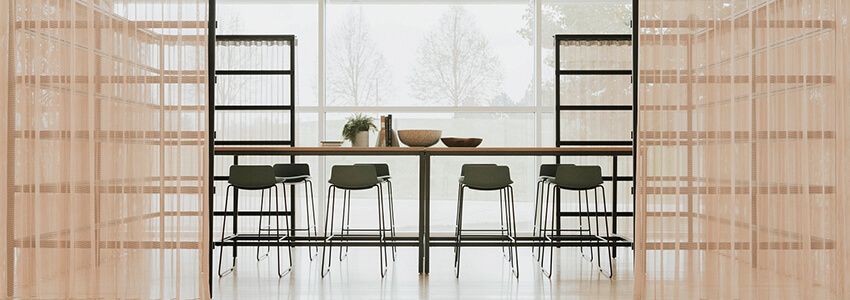It’s Not Home or Office - It’s Work from Anywhere
Working fluidly between the office, home and spaces in between.
The office is going through an evolution that will change the way we work. Previously, we came to the office to work — now we can work anywhere. Driven by design thinking and advances in technology the office is transforming into an environment where much focus is placed on fostering organisational culture, social connection, and collaboration.
Not every job function requires an assigned workstation or a daily presence in the office.
The power of a simple laptop and a good Wi-Fi connection has paved the way for work to take place not just in the office or at home, but anywhere.
The opportunity to work from anywhere was up until March 2020, considered an enviable work perk that has now become a necessary function of office-based organisations across the globe. In 2020, we surveyed 130 New Zealand businesses with organisational sizes ranging from 3 to 250 staff. The data collected from this survey, coupled with global research undertaken by our partners at Haworth has given us valuable insight into what the future of work looks like.
Work is now taking place in more than one location. It’s being delivered from an integrated ecosystem that balances work among three primary physical locations: office, home, and third places.
What will we do in these locations?
THE OFFICE
People value being in the workplace because it provides opportunity to collaborate, create, and innovate, and to connect socially.
The office provides opportunity to leverage the teams, networks, and processes that help employees perform at their best. Its purpose has shifted from where we had to work to a place that’s more dynamic and experiential than ever.
When designing for the office we’ll want to consider providing spaces for team brainstorming, social interactions, impromptu connections, creativity, access to materials, face-to-face meetings and a commute.
HOME
The home office will continue to evolve to support activities like focus work, reading, scheduled calls and virtual meetings, with the benefit of no commute.
Organisations with employees working from home will need to ensure ergonomic needs are being met.
Home also plays a role in the work/life balance equation when flexible schedules are supported by employers.
THIRD PLACE
The spaces in between office and home – or third places – will become more important as people seek out spaces to work away from distractions like co-workers, partners, kids, and pets.
These places add new dimensions to our work and allow for temporary focus work or touchdown activities in a different setting from the office or home.
People will be able to have meetings over coffee, socialise, perform focus work, and become adept at using these spaces as touchdown points when traveling.
Where does the best work happen?
Empowering employees to work fluidly in an ecosystem that includes office, home, and third places allows flexibility to choose the right space for the right task, with the resources and technology that support both.
The office is the epicentre of what makes work happen, to help people perform their best and it’s where organisations establish and cultivate their unique culture.
Humans are social creatures who need social connection to thrive. The office environment nurtures the human element of our work lives through all five of our senses, which virtual experiences can’t replace.
This article contains data from our Workplace Survey and research from the Haworth Work From Anywhere system. See more at www.europlan.nz
Europlan
Auckland - 125 the Strand, Parnell
Wellington - The Woolstore, 262 Thorndon Quay
Christchurch - 4 Ash St, Central City

